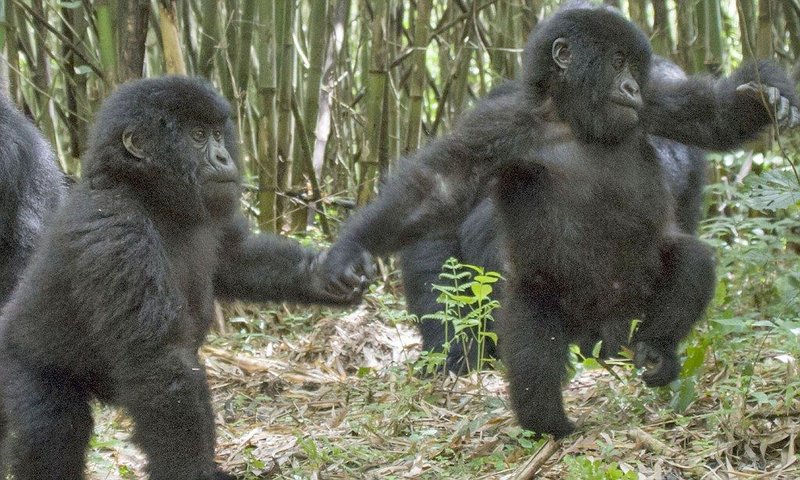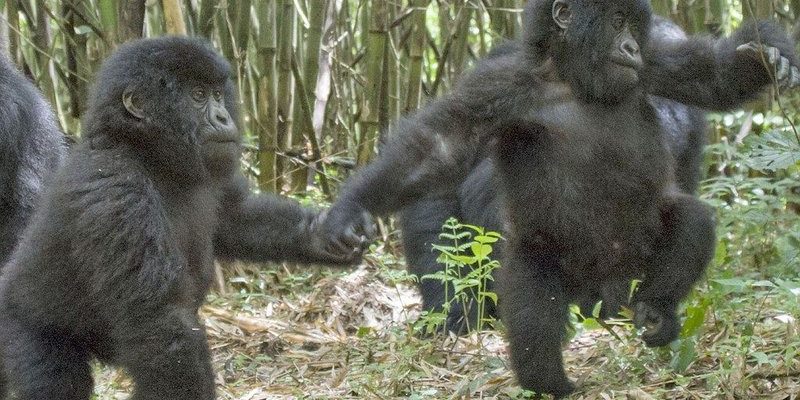
Zorillas, also known as *Ictonyx striatus*, are native to Africa and are quite adaptable. They mostly thrive in grasslands and savannas, where they can dig, hunt, and, of course, raise their offspring. Much like a well-organized family with a daily routine, zorillas have specific behaviors and strategies when it comes to nurturing their young. Think of it as a unique blend of instinct and learned behavior, where the parents use their natural skills to ensure their babies grow up healthy and strong.
Understanding Zorilla Reproduction
Before we talk about parenting, it’s important to understand how zorillas reproduce. Zorillas reach sexual maturity around one year of age. Mating typically occurs during the rainy season, when food is more abundant, allowing the parents to provide for their little ones. Female zorillas can have a litter of about three to six kits, which is their term for young zorillas.
Once pregnant, a female zorilla carries her kits for about 40 days. This isn’t a long time compared to other mammals, but it’s just enough for the kits to develop into tiny, furry versions of their parents. Here’s the thing: the survival of these kits heavily relies on the mother’s ability to find safe places for birthing and rearing, like burrows or hidden dens.
The Nesting Phase
Once the kits are born, they need a secure and cozy place to thrive. Zorillas are instinctual diggers and will use their sharp claws to create burrows in the ground. These burrows serve as a safe haven for the newborns, protecting them from predators and harsh weather.
The mother is incredibly attentive during this time. She will stay close to her kits, nursing them frequently. You might picture a mother zorilla curling around her babies to keep them warm and secure. The kits are born blind and helpless, so this early phase is vital for their survival. In fact, they rely on their mother for nutrition and warmth until they’re ready to venture outside.
Nursing and Growing Up
As the kits grow, their mother continues to nurse them until they are about two months old. This nursing period is crucial for their development, as it provides essential nutrients and antibodies that boost their immune systems. During this time, the mother also begins to introduce solid food.
You might be wondering what exactly a zorilla eats. They are omnivorous, which means they enjoy a diet of insects, small mammals, and even fruits. A mother zorilla will bring food back to the burrow, teaching her young how to eat as they watch and learn. This is a key part of their upbringing, as learning to hunt and forage is essential for independence.
Parental Care and Protection
Mother zorillas are not just caregivers; they’re fierce protectors. If a predator comes too close to their den, a mother zorilla will defend her kits with all her might. This might involve making loud, warning calls or displaying aggressive behavior to scare off intruders.
The kits often engage in playful behavior that helps them develop their skills. They learn to wrestle, chase, and practice stalking—all essential skills they will need as adults. Watching a group of young zorillas play is a delightful sight, as they tumble and roll with each other, honing their abilities in a safe environment.
Independence and Leaving the Nest
Once the kits are around three to four months old, they are ready to start venturing outside the burrow. At this stage, they begin to explore their surroundings, practicing their hunting skills and learning more about their environment.
During this transition period, their mother still supervises them closely. She watches from a distance, ready to step in if danger arises or if the young ones need guidance. It’s a big step towards independence, but the kits are not fully on their own just yet. They will often stay close to their mother for several months, honing their skills and learning from her.
The Role of Males in Zorilla Parenting
You might be curious about whether male zorillas play a role in raising the young. Generally, they do not participate directly in parenting. Once mating takes place, males tend to move on, leaving the female to raise the kits alone. This is common in many animal species, where the female takes on the primary responsibility of nurturing the young.
However, there are instances where males may help by defending their territory, which can provide a safer environment for the mother and her kits. So, while their role might be limited, males do contribute indirectly to the rearing process.
Raising young zorillas in the wild is an incredible journey filled with challenges and triumphs. From the careful nesting and nurturing phases to the playful exploration of the world outside their burrow, zorilla parenting is a blend of instinct, protection, and learned behavior.
Honestly, it’s a beautiful example of how animals adapt and excel in their environments, nurturing the next generation with what they know. So, if you ever find yourself in the wilds of Africa, keep an eye out for these elusive creatures. The next time you think about parenthood in the animal kingdom, remember the zorilla and the unique ways they guide their young to independence.

